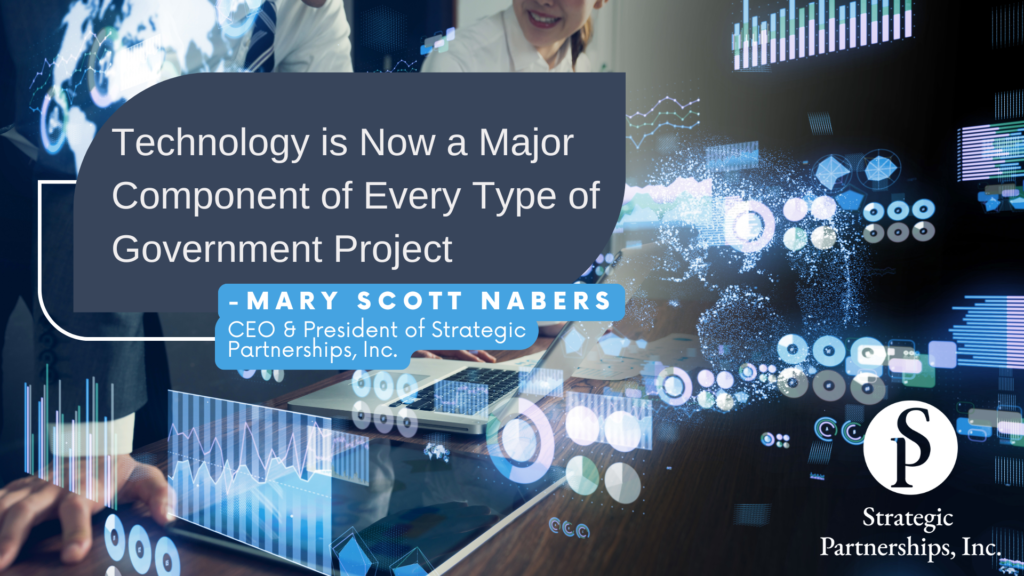Just over a decade ago, a sweeping trend was very noticeable as state agencies, cities, counties, transit authorities and higher education institutions added Innovation Officers at the executive levels of organizational charts. These individuals were hired to play a strategic role – one that would incorporate new thinking into operations. The primary objective in adding this position was to stimulate thinking and action about meeting critical needs in new ways.
Most innovation officers have focused on ways to improve citizen services, create more efficiencies, reduce resources and enhance safety. And all innovative initiatives have included-leading edge technology.
The result has been that public sector innovation officers are significantly increasing the demand for all types of technology in government-funded projects. Many upcoming projects that will be launched by innovation officers in 2025 are currently on drawing boards or under discussion, but the following examples provide insight into the types of opportunities that can be expected from just one segment of government – transit authorities and departments of transportation – next year and for the next several years.
The Alabama Department of Transportation, in 2022, launched a project to alleviate traffic congestion along Interstate 65. The agency and the chief innovation officer only had a budget of $5 million but tackled a large initiative that called for the use of cutting-edge technologies, including artificial intelligence (AI) and real-time data systems that could predict and manage traffic patterns. The project’s objective was to adjust traffic signals and lane designations based on current conditions to reduce delays and improve traffic flow. The effort was designed to specifically improve the management of traffic during peak hour.

All state DOTs struggle continually to find ways to decrease traffic congestion, so it is obvious that other upcoming projects will focus on the same problem. Technology will definitely be in high demand as innovative and improvement projects related to transportation improvement are launched in the future.
In Kansas, the state’s transportation agency designed a project to improve the efficiency and safety of the U.S. 83 corridor, which is a key freight route. The project carried a $6.7 million cost projection and included installation of new fiber optic cables and advanced intelligent transportation technology to deliver real-time traffic, weather and safety information to commercial drivers. The technology includes vehicle detection systems and dynamic message signs with capabilities to communicate information to freight operators. Freight signal priority systems reduce delays for commercial trucks, and it appears that this is one of the very first projects such as this.
The public transit authority in Chicago, in a recent innovation initiative, also used technology to improve bus travel times and transit reliability. The technology deployed allows advanced communication to all the authority’s vehicles. The buses will soon be able to signal traffic lights at intersections and request priority right of way to minimize stopping. The smart system will then be able to adjust signal timings when buses approach, allowing them to pass through more efficiently while improving the overall flow of traffic. The project launched in 2023 and is expected to be fully implemented by 2025. It aligns with the city’s efforts to modernize its transportation infrastructure by integrating smart technology to reduce congestion.
Machine learning traffic prediction technology will be a critical component in a Maryland project designed to manage traffic. This project’s goal is to improve management of traffic incidents. It will enhance monitoring capabilities so traveler information can be relayed to all other motorists. Technology will include adaptive signal timing controls, connected vehicles and responsive travel time signage. Predictive traffic data can anticipate future traffic volume and send real-time updates while also providing alternate route suggestions. Freight traffic will be improved because when traffic becomes stalled, the technology will optimize freight schedules. The project is still undergoing testing along 113 miles of the U.S. 50 corridor. There is no doubt that more projects like this will be launched over the next several years.
The South Jersey Transportation Authority has launched a project designed to create a smart corridor on the Atlantic City Expressway. With a total cost of less than $10 million, the project will use what is called connected ‘vehicle-to-everything’ technology to enable real-time communication between moving vehicles. The effort calls for preparing the roadway for connected and automated vehicles. When completed, the effort will optimize traffic flow, reduce congestion and enhance public safety. This effort could not have been designed without the use of technology.
The takeaway is that although these examples only focus on technology that is currently critical to transportation projects, technology will be the critical component of almost every type of innovative project launched over the next decade. Smart technology will be ubiquitous in government contracting whether the sector is water, construction, energy, education, healthcare, transportation or public safety over at least the next decade. Emerging technology firms with offerings to enhance public sector projects will be in high demand from not only public officials but also by large prime contractors looking for new value propositions to offer to government.
About the Author: As President and CEO of Strategic Partnerships, Inc. Mary Scott Nabers, a former statewide office holder in Texas, has decades of experience in the public and private sectors. Her unique expertise is her success in connecting the two sectors. Mary is also a well-recognized expert in the P3 world and a true business development professional. Strategic Partnerships, Inc. publishes Government Market News, the premier platform for connecting public and private sector leaders in the government marketplace.
Tags: AI in government, Connected Vehicles, digital transformation, Emerging Tech, Government Technology, GovTech, Innovation Officers, Machine Learning, public sector innovation, Public-Private Partnerships, Smart Cities, Smart Infrastructure, Tech in Transit, Traffic Management, Transportation Tech






 RSS Feed
RSS Feed